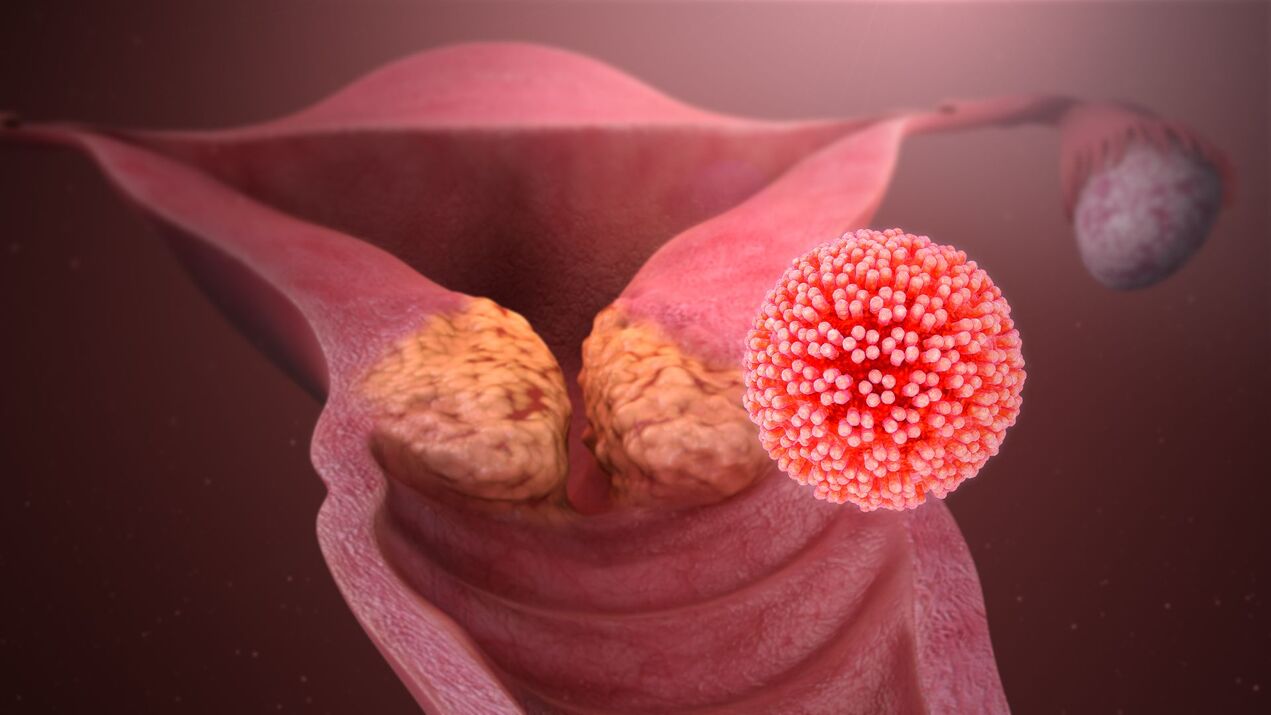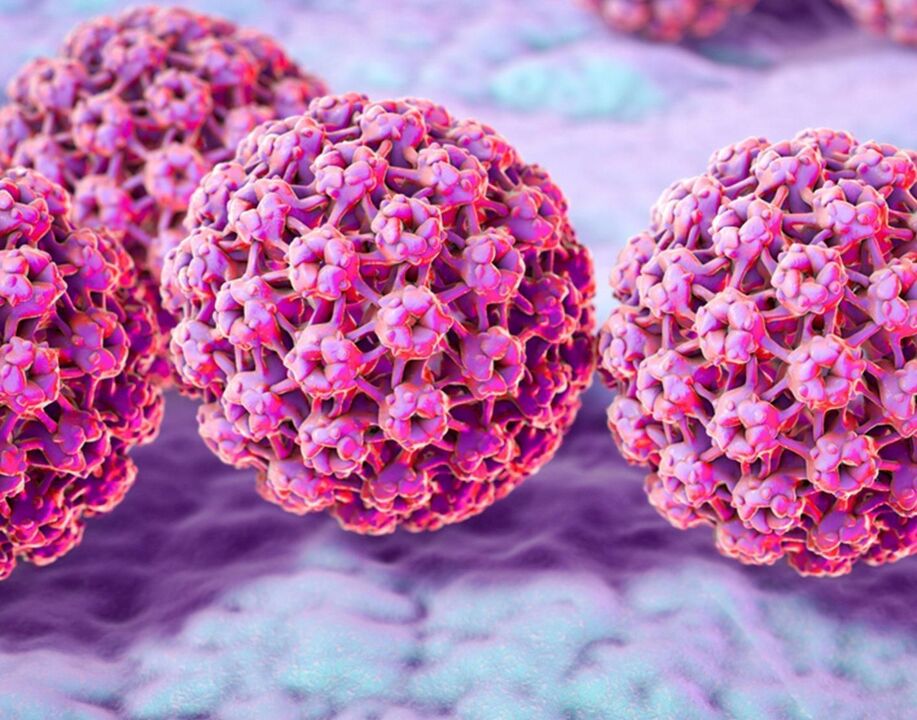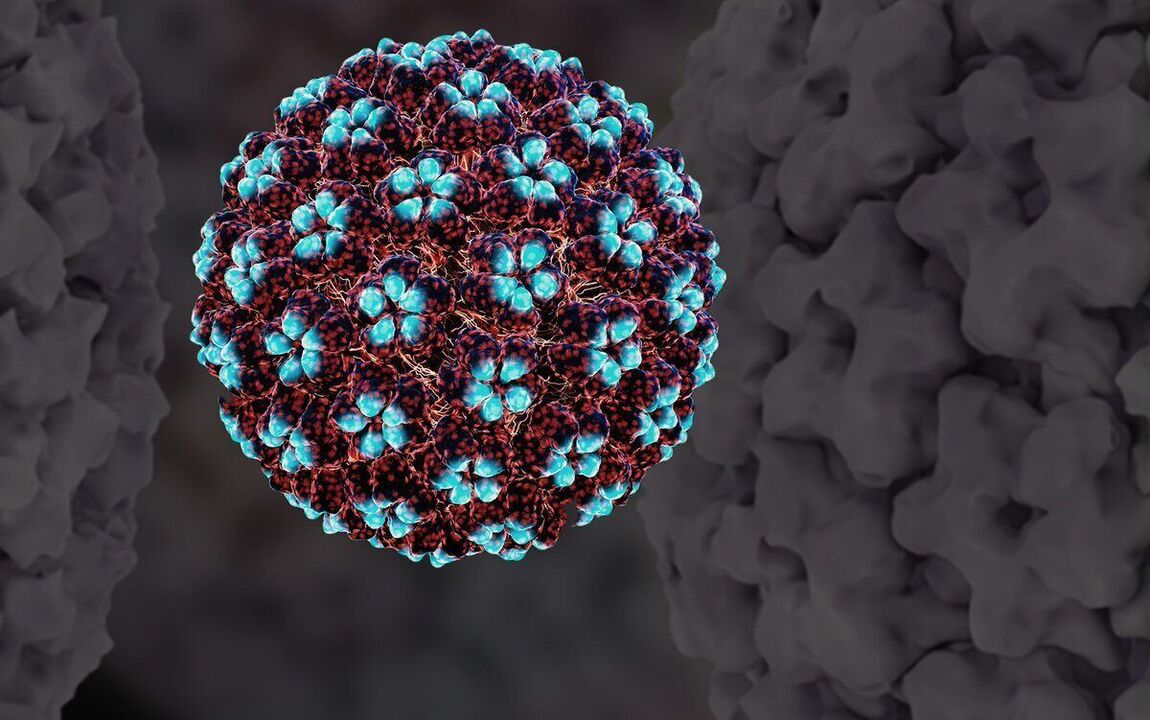Human papillomavirus (HPV) is a very common sexually transmitted infection in the world.
The peculiarity of this infection is that it may not be noticeable for many years, but eventually leads to the development of benign diseases (papilloma) or malignant (cervical cancer) of the genitals.

Types of human papillomavirus
More than 100 types of HPV are known. Types are "subspecies" of viruses that are different from each other. Types are determined by the number assigned to them when they are discovered.
The high oncogenic risk group consisted of 14 types: 16, 18, 31, 33, 35, 39, 45, 51, 52, 56, 58, 59, 66, 68 (these types are associated with the development of cervical cancer).
In addition, low oncogenic risk types are known (especially 6 and 11). They lead to the formation of anogenital warts (genital warts, papillomas). Papillomas are located on the mucosa of the vulva, vagina, in the perianal area, on the skin of the genitals. They almost never become malignant, but lead to significant cosmetic defects in the genital area. Warts on other parts of the body (hands, feet, face) may also be caused by this type of virus, or may have a different origin. In the next article, we will discuss the "high -risk" and "low -risk" types of HPV separately.
Human papillomavirus infection
The virus is spread primarily through sexual contact. Almost all women will be infected with HPV sooner or later: up to 90% of sexually active women will develop this infection for the rest of their lives.
But there is good news: the majority of those infected (about 90%) will get rid of HPV without any medical intervention within two years.
This is a normal course of infectious process caused by HPV in the human body. This time is enough for the human immune system to get rid of the virus completely. In such cases, HPV will not bring any harm to the body.That is, if HPV was detected some time ago, and now it is not, this is normal!
Keep in mind that the immune system works in different people at "different speeds". In this case, the speed of getting rid of HPV can be different for sexual partners. Therefore, a situation may occur when HPV is detected in one partner, and not in the other partner.

Most people become infected with HPV soon after they become sexually active, and many will not know that they have been infected with HPV. Immunity remains not formed after infection, therefore, it is possible to re-infect both with the same virus that has been found, and with other types of viruses.
"High -risk" HPV is dangerous because it can lead to the development of cervical cancer and several other types of cancer. "High -risk" HPV does not cause other problems.
HPV does not lead to the development of inflammation of the vaginal/cervical mucous membranes, irregular menstruation or infertility.
HPV does not affect the ability to conceive and carry a pregnancy.
"High -risk" HPV babies are not contagious during pregnancy and childbirth.
Diagnosis of human papillomavirus
There is no point in taking an HPV test for high oncogenic risk before age 25 (unless women start sexual activity earlier (before age 18)), because at this time it is more likely to detect the virus soon. leave the body alone.
After 25 - 30 years, it makes sense to take an analysis:
- together with cytological analysis (PAP - test). If there are changes in the PAP test - and "high -risk" HPV, then this condition requires special attention;
- the long -term persistence of "high -risk" HPV in the absence of cytological changes also requires attention. Recently, the sensitivity of HPV testing in cervical cancer prevention has been shown to be higher than cytological sensitivity, and therefore the determination of HPV alone (without cytology) was approved as a stand-alone study for cervical cancer prevention. in the United States. However, in our country, annual cytological examination is recommended, so a combination of these two studies seems reasonable;
- after treatment of dysplasia / precancer / cervical cancer (absence of HPV in post -treatment analysis almost always indicates successful treatment).
For the study, it is necessary to obtain a smear from the cervical canal (it is possible to examine the material from the vagina, however, as part of the examination, it is recommended to obtain material from the cervix).
Analysis must be provided:
- 1 time per year (if "high -risk" HPV has been detected previously, and analysis is given along with cytological examination);
- 1 time in 5 years if the previous analysis was negative.
There is almost no need to take an analysis for low oncogenic risk HPV. If there is no papilloma, then this analysis does not make sense in principle (viral transmission is possible, there is no treatment for the virus, so what to do next with the results of the analysis is unknown).
If there is a papilloma, then:
- often it is caused by HPV;
- it must be deleted regardless of whether we find type 6/11 or not;
- if we take a swab, then directly from the papilloma itself, and not from the vagina / cervix.
There are tests to detect different types of HPV. If you undergo HPV testing on a regular basis, pay attention to the specific types included in the analysis. Some laboratories do research only on types 16 and 18, others - on all types together. You can also take a test that will identify all 14 types of "high -risk" viruses in a quantitative format. Quantitative features are important for predicting the likelihood of getting precancerous and cervical cancer. This test should be used in the context of cervical cancer prevention and not as a self -test. Analysis for HPV without cytological results (PAP tests) often does not allow to draw any conclusions about the health status of the patient.
There is no such analysis that will determine whether the virus in a particular patient will "come out" or not.

Treatment of human papillomavirus
There is no medical treatment for HPV. There are treatments for conditions caused by HPV (papilloma, dysplasia, precancer, cervical cancer).
This treatment should be carried out using surgical methods (cryocoagulation, laser, radiocnife).
There are no "immunostimulants" associated with HPV treatment and should not be used. No well -known drug in our country has passed adequate tests that will demonstrate its effectiveness and safety. There are no protocols/standards/recommendations including this drug.
The presence or absence of cervical "erosion" does not affect HPV treatment tactics. You can read more about such situations when it is necessary to treat erosion in the article "Erosion or non -erosion? ".
If the patient has no complaints, and no papilloma/changes in the cervix during colposcopy and according to the PAP test, no medical procedure is required.
It is only necessary to retake the analysis once a year and monitor the condition of the cervix (annual PAP test, colposcopy). In most patients, the virus will "leave" the body on its own. If it does not go away, it will not necessarily lead to the development of cervical cancer, but control is necessary.
Treatment of sexual partners is not required (except in cases where both partners have genital papilloma).
Prevention of human papillomavirus infection
A vaccine has been developed that protects against HPV types 16 and 18 (one of the vaccines also protects against types 6 and 11). HPV types 16 and 18 are responsible for 70% of cervical cancer cases, which is why protection against it is so important. Routine vaccinations are used in 45 countries around the world.
Condoms (do not provide 100%protection).
The only method that provides 100% protection is abstinence from sexual intercourse. At all I’m not campaigning for it, I’m just giving food to think about.














































































